
Thetford Railway Station, Station Road, Thetford, Norfolk, was built in two phases. The more striking side, nearest the road, came first. It was built 1845 as part of the Norwich and Brandon Railway. According to the listing text, this line was constructed by Messrs Grissell & Peto, working with the engineers Robert Stephenson and George Parker Bidder (1806-1878). Bidder would have been more involved with the developing project than Stephenson. The station building itself is of flint with gault-brick dressings, and has unusual pointed gables on each side and end. Various kinds of gables were a popular feature in East Anglia long before the vogue for the Jacobean style, or "Pont Street Dutch" in London. [Click on this and the following images to enlarge them.]
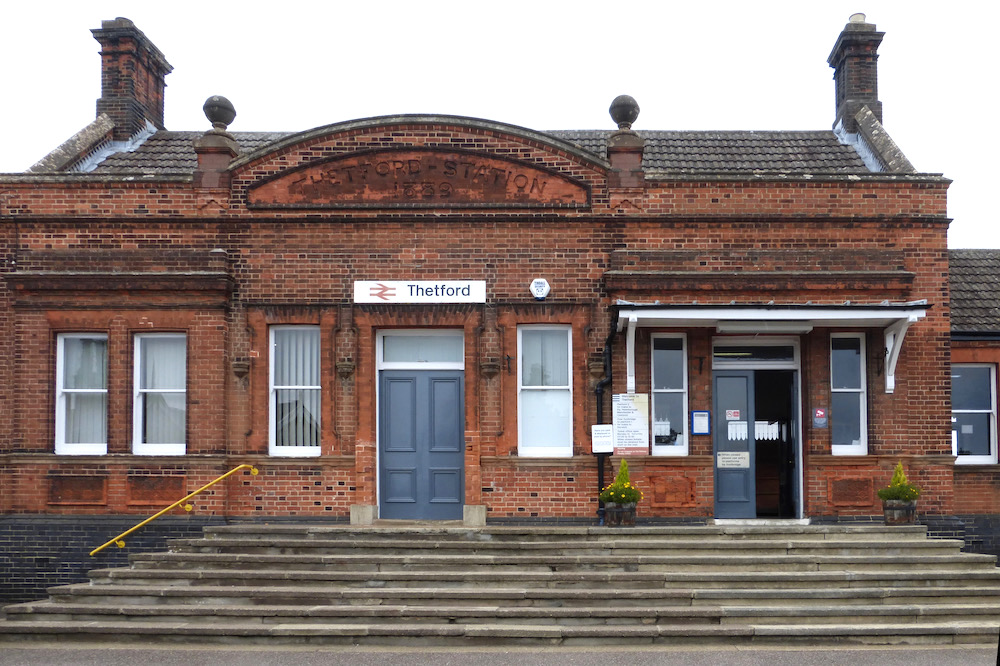
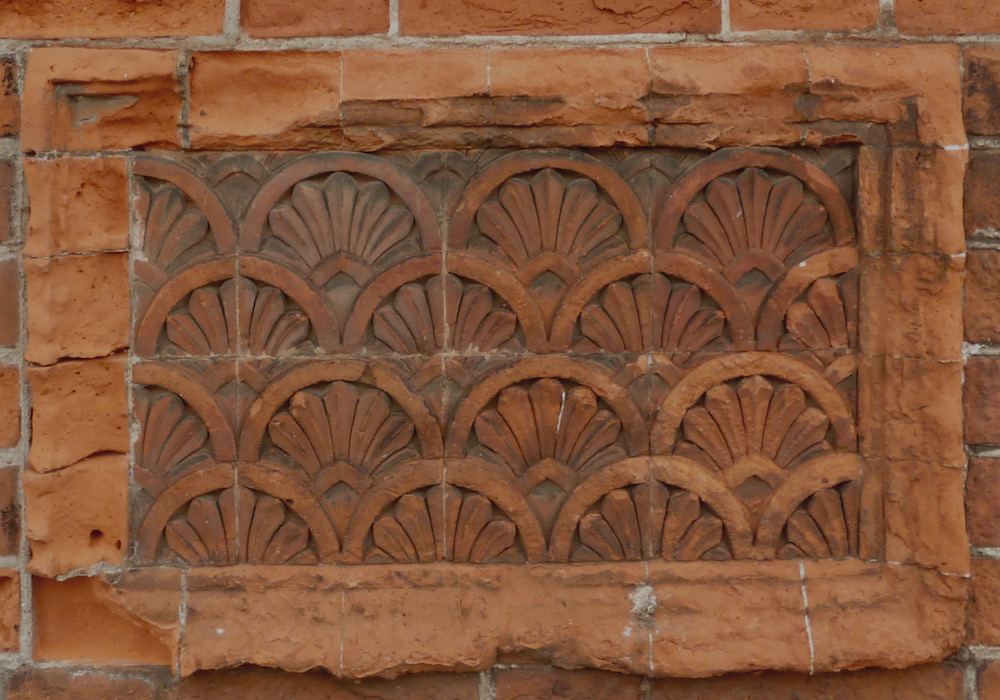
Left: The 1859 extension, now the part in use. Right: Moulded brick decoration in two panels on the front elevation of the station.
The red brick extension was built in 1889, after Thetford had become a station of the Great Eastern Railway. It is the part now in use, and although it is of red brick and altogether more conventional, it has some typical late-Victorian decorative touches. Restored in 1994, the whole station is Grade II listed.
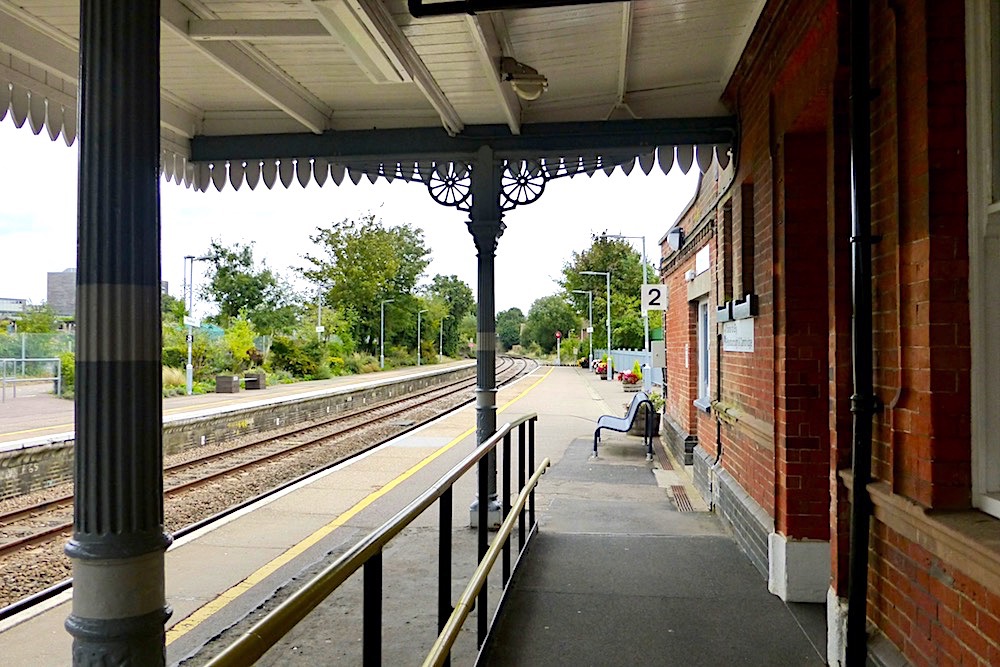
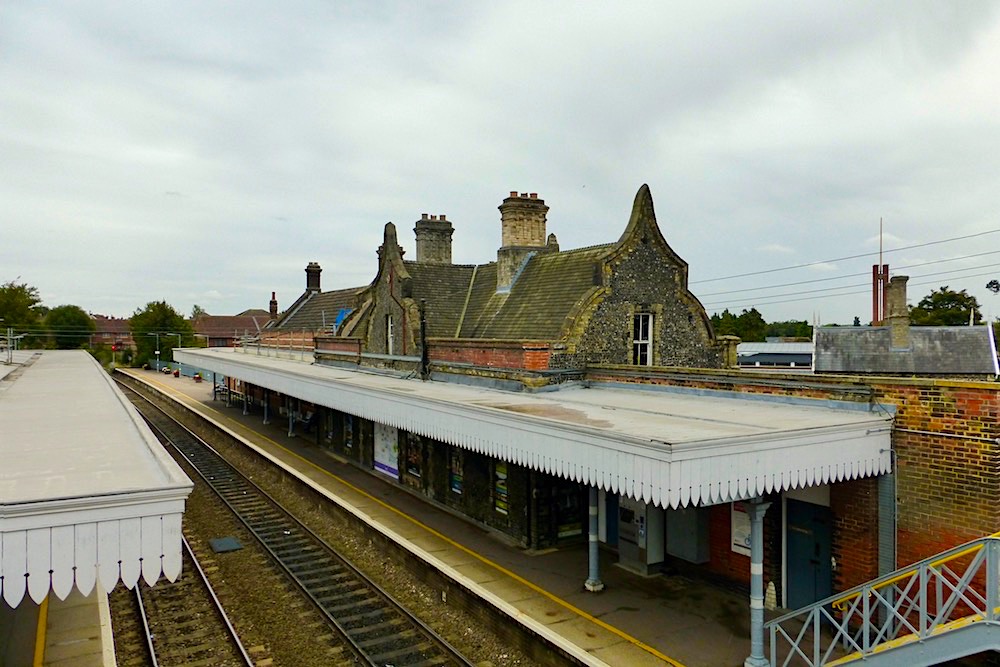
Left: Platform 2. Right: Looking down from the footbridge, giving a good view of the gabled side of the old station building along the platform.
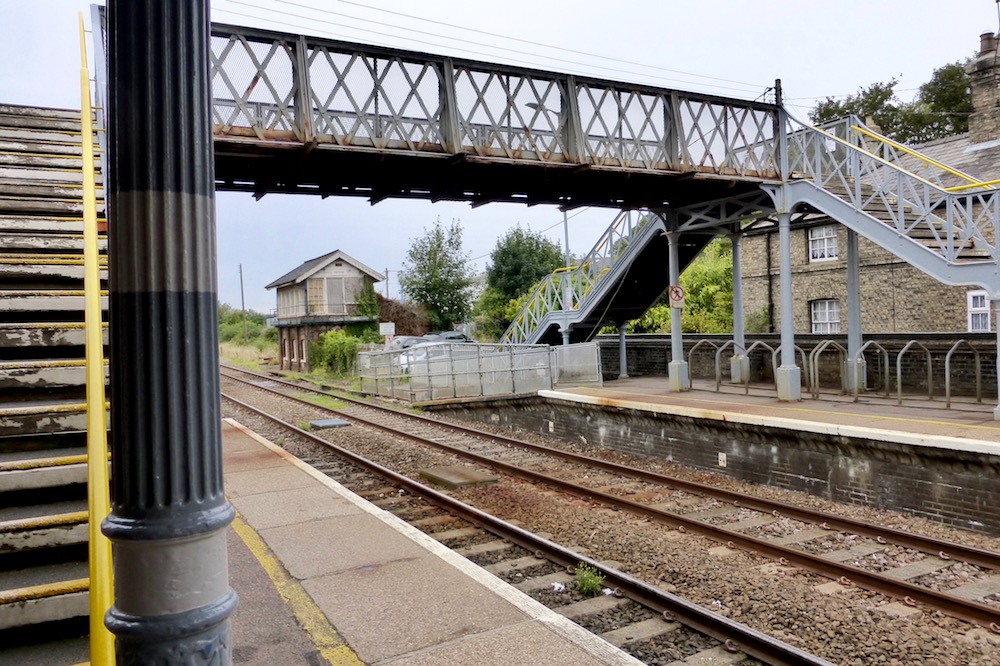
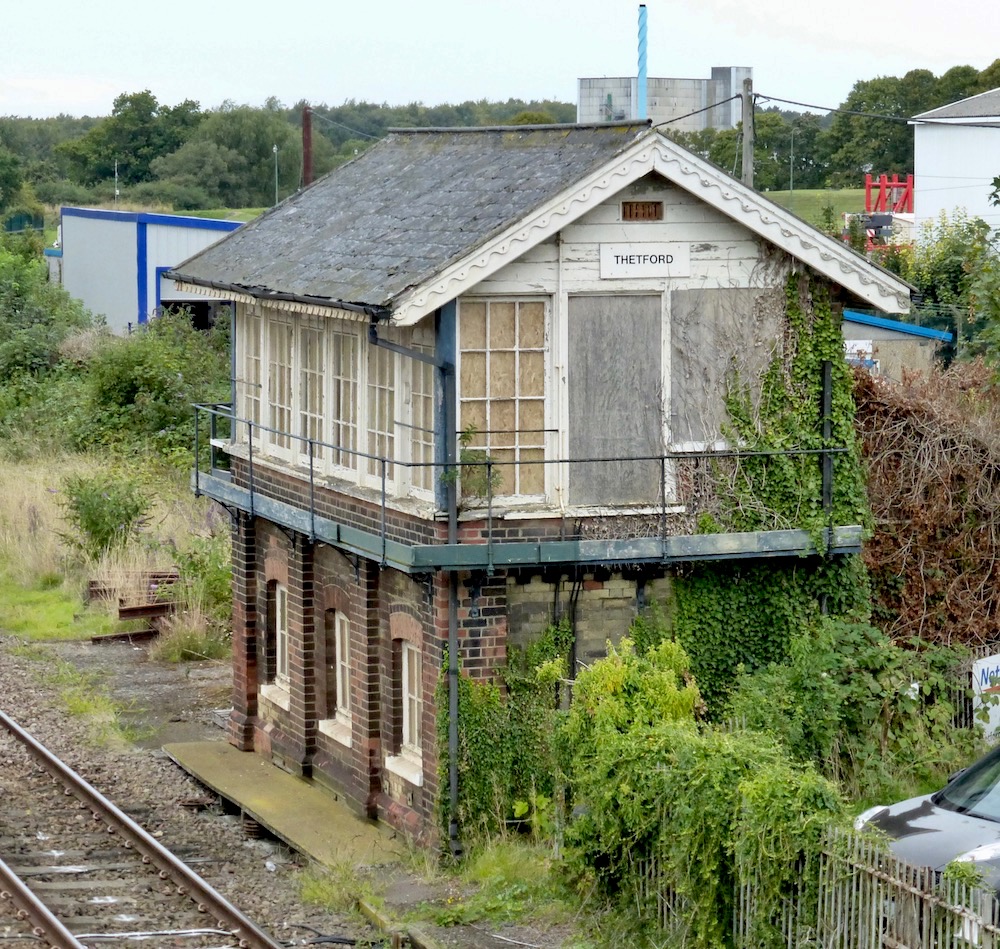
Left: View of the footbridge. Right: The signal-box.
With its crossing, signal-box, station-master's house and nearby station cottages, Thetford Station is an especially well-preserved complex. Although the bridge is not included in the station listing, it is mentioned there as being of local interest, and contributing to the station as a whole. As for the signal-box just west of the station, it is independently Grade II listed, having been (according to its own listing text)
built in 1883 when block signalling was installed on the Ely to Norwich line. Like most of the other boxes on the line, it was built to the GER [Great Eastern Railway] Type 4 design which is distinguished by being of brick construction, rather than the timber used on most GER boxes from the 1880s. The box has a single-storey extension on the north (rear) side which is shown on the second edition Ordnance Survey map of 1905. A further small extension has since been built onto the west side of this.
The station is now part of the Greater Anglia network. It is worrying to see that the original station building and the signal-box have both had to be boarded up.
Photographs and text by Jacqueline Banerjee. You may use the images without prior permission for any scholarly or educational purpose as long as you (1) credit the photographer and (2) link your document to this URL in a web document or cite it in a print one.
Related material
- Norwich Station, at the other end of the original line
Bibliography
Pevsner, Nikolaus, and Bill Wilson. Norfolk 2: North-West and South (The Buildings of England). New Haven and London: Yale University Press, 2002.
"Thetford Railway Station." Historic England. Web. 17 October 2018.
"Thetford Signal Box, Thetford." Historic England. Web. 17 October 2018.
Created 17 October 2018